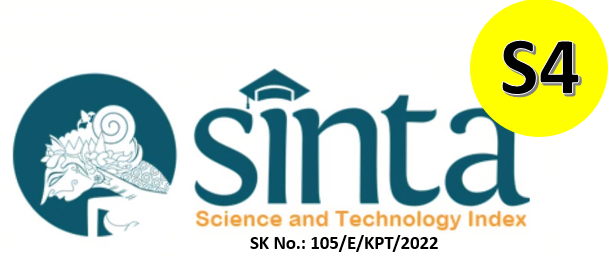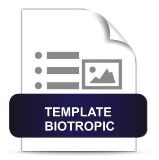Inventarisasi Tumbuhan Akuatik Berpotensi Fitoremediator Air Limbah Industri di Waduk Bunder Gresik
DOI:
https://doi.org/10.29080/biotropic.2021.5.2.68-73Keywords:
specied diversity, aquatic plant, phytoremediator, heavy metalAbstract
The Bunder Reservoir Ecosystem is composed of various components, both biotic and abiotic. One of the components contained in the reservoir is aquatic plants as phytoremediator for wastewater. The aquatic plant inventory in the Bunder Reservoir aims to determine the diversity of aquatic plant species that have the potential to phytoremediate industrial waste. The research design was descriptive qualitative exploratory. Aquatic plant species were collected using a subjective estimates method with visual techniques. In the waters of the Bunder Reservoir, 17 species of aquatic plants from 13 families were found, including 11 emergent types, 1 free floating, 4 rooted floating, and 1 submersed. Types that have the potential to act as phytoremediators for inorganic waste in the metal categories are A. philoxeroides, A. sessilis, Cyperus sp. Hygrophila sp., I. carnea, I. aquatic, L. perpusilla, N. nucifera, Nymphaea sp., N. indica, P. barbata, and T. latifolia. The aquatic plant that has the potential for phytoremediator of pesticide waste is L. adscenden. While S. sesban tends to remove oil pollutants. Organic waste degrading species consist of T. latifolia, L. perpusilla, I.aquatica, Cyperus sp., And Brachiaria sp
Downloads
References
Andrade, A.F.M., Nelson M.B do Amaral Sobrinho. F.S dos Santos. M.O.L. Megalhaes, A Tolon-Beccera, L da Silva Lima. 2014. EDTA-induced phytoextraction of lead and barium by brachiaria (B. decumbens cv. Basilisk) in soil contaminated by oil exploration drilling waste. Acta Scientiarum. Agronomy 36(4): 495-500
Ashraf, M.A., Maah J.M., Yusoff I. 2013. Evaluation of Natural Phytoremediation Process Occuring at ex-situ Mining Catchment. Chiang Mai J Sci 40(2): 198-213
Astuti L.P. dan Indriatmoko. 2018. Kemampuan Beberapa Tumbuhan Air dalam Menurunkan Pencemaran Bahan Organik dan Fosfat untuk Memperbaiki Kualitas Air. Jurnal Teknologi Lingkungan 19(2): 183-190
Caroline J dan G.A. Moa. 2015. Fitoremediasi Logam Timbal (Pb) Menggunakan Tanaman Melati Air (Echinodorus palaefolius) Pada Limbah Industri Peleburan Tembaga Dan Kuningan. Seminar Nasional Sains dan Teknologi Terapan III : 733-744
Chinmayee D.M., Mary S.A., Mini I, Swapna T.S. 2014. Phytoremediation Potential and Antioxidant Responses in Alternanthera sessilis (L) R.BR. Journal of Aquatic Biology and Fisheries 2 : 114-118.
Daud, M.K., S. Ali., Z. Abbas, I.E. Zaheer, M.A. Riaz, A. Malik, A. Hussain, M.Rizwan, M. Zia-ur-Rehman, S.J. Zhu. 2018. Potential of Duckweed (Lemna minor) for the Phytoremediation of Landfill Leachate. Journal of Chemistry 2018: 1-9. https://doi.org/10.1155/2018/3951540
Farhana M, Zhenyu W, Ying X, Jian Z, Dongmei G, Yang-Guo Z, Zulfiqar AB, Baoshan X .2012. Rhizodegradation of petroleum hydrocarbons by Sesbania cannabina in bioaugmented soil with free and immobilized consortium. J Hazard Mater 30:262–269
Fletcher J., N. Willby, D.M. Oliver, R.S. Quilliam. 2020. Phytoremediation Using Aquatic Plants. Phytoremediation In-situ Applications Chapter 7. Springer Nature Switzerland. Switzerland
Hamidian AH, Norouznia H, Mirzaei R. 2016. Phytoremediation efficiency of Nelumbo nucifera in removing heavy metals (Cu, Cr, Pb, As and Cd) from water of Anzali wetland. J Ecol Nat Environ 69(3):633–643
Irawanto, R., A A Munandar. 2017. Kemampuan tumbuhan akuatik Lemna minor dan Ceratophyllum demersum sebagai fitoremediator logam berat timbal (Pb). Pros Sem Nas Masy Biodiv Indon 3(3): 446-452.
Kadim M.K., S. Sudaryanti, W. Endang Y. H. 2013. Pencemaran Residu Pestisida di Sungai Umbulrejo Kecamatan Dampit Kabupaten Malang. J. Manusia dan Lingkungan 20 (3):262-268.
Khan, M.I., S.A Cheema, S.Anum, NK Niazi, M.Azam, S.Bashir, I Ashraf, R.Qadri. 2020. Phytoremediation of Agricultural Pollutans. Phytoremediation In-situ Applications Chapter 2. Springer Nature Switzerland. Switzerland
Khan, M.I., S.A. Cheema, S.Anum, N.K Niazi, M.Azam, S. Bashir, I. Ashraf, R. Qadri. 2020. Phytoremediation of Agricultural Pollutants. Phytoremediation, Concepts and Strategies in Plant Sciences Chapter 2. Springer Nature. Switzerland.
Martin, Artho Nugraha. 2019 . Fitoremediasi Logam Besi (Fe) Pada Air Eks Galian Pasir Kecamatan Pasir Sakti Kabupaten Lampung Timur Menggunakan Eceng Gondok Eichhornia crassipes (Martius, 1824). Skripsi. Fakultas pertanian. Universitas Lampung. Bandar Lampung.
Mihaela C., Corneau C.G., Craciun C., Tripon S. 2014. Phytoremediation Of Some Heavy Metals And Radionuclides From A Polluted Area Located On The Middle Jiu River. Case Study: Typha Latifolia L. Muzeul Olteniei Craiova. Oltenia. Studii şi comunicări. Ştiinţele Naturii. Tom 30(2): 209-221
Mulyono, D. 2009. Pencemaran Pestisida Dalam Budidaya Pertanian dan Upaya Pengendaliannya. JRL 5(3): 219-224.
Nandakumar S, Pipil H, Ray S, Haritash AK (2019) Removal of phosphorous and nitrogen from wastewater in Brachiaria-based constructed wetland. Chemosphere 233:216–222
Niazy M.M., dan M.E.M. Wahdan. 2017. Enhanching Phytoremediation of Pb by Treating Soil With Citric Acid and Growing White Jute (Corchorus capsularis, L.) and River Red Gum (Eucalyptus camaldulensis). Zagazig J.Agric.res 44(4): 1359-1367.
Nizam, N.U.M., M.M. Hanafiah, I.M. Noor, H.I.A. Karim. 2020. Efficiency of Five Selected Aquatic Plants in Phytoremediation of Aquaculture Wastewater. Appl. Sci. 10(2712) : 1-11.
Notohadiprawiro. 2006. Logam Berat dalam Pertanian. Ilmu Tanah Universitas Gadjah Mada. Yogyakarta.
Nuhgroho, B.Y.H., S.Y. Wulandari, A.Ridlo. 2015. Analisis Residu Pestisida Organofosfat di Perairan Mlonggo Kabupaten Jepara. Jurnal Oseanografi 4(3):541-544.
Obando WSO. 2012. Evaluation of sacred lotus (Nelumbo nucifera Gaertn.) as an alternative crop for phyto-remediation. Ph. D. thesis, Auburn University, Auburn, Alabama, 193 p
Prayitno dan M. Sholeh. 2014. Pengurangan Nitrogen Pada Limbah Cair Terolah Industri Penyamakan Kulit Menggunakan Sistem Wetland Buatan. Majalah Kulit, Karet, dan Plastik 30(2):79-86.
Sa’ad, N.S, R. Artanti, T. Dewi. 2009. Fitoremediasi untuk Rehabilitasi Lahan Pertanian Tercemar Kadminum (Cd) dan Tembaga (Cu). Jurnal Tanah dan Iklim 30: 59-66
Safarrida A, Ngadiman, Jaka. 2015. Fitoremediasi kandungan kromium pada limbah cair menggunakan tanaman air. Jurnal Bioteknologi dan Biosains 2 (2): 55-59.
Said, N.I., dan M.R. Sya’bani. 2014. Penghilangan Amoniak di Dalam Air Limbah Domestik Dengan Proses Moving Bed Biofilm Reactor (MBBR). JAI 7 (1): 44-65.
Salem, Z.B., Laffray, X., Al-Ashoor, A., Ayadi H, Aleya, L., 2017. Metals and metalloid bioconcentrations in the tissues of Typha latifolia grown in the four interconnected ponds of a domestic landfill site. J Environl Sci, 54: 56-68. DOI: 10.1016/j.jes.2015.10.039
Sulistia S dan A.C. Septisya. 2019. Analisis Kualitas Air Limbah Domestik Perkantoran. JRL 12(1):41-57.
Syabani, M.W., F. Nugraha, Noodiyanto. 2011. Potensi Phytoremediation dari Ipomoea aquatica untuk Air Terkontaminasi Kromium Valensi Enam. Prosiding Workshop Penelitian dan Pengembangan Kulit, Karet, dan Plastik. Yogyakarta
Thampatti, K.C., V.I. Beena, A.V. Meera, A.S. Ajayan. 2020. Phytoremediation of Metals by Aquatic Macrophytes. Phytoremediation In-situ Applications Chapter 6. Springer Nature Switzerland. Switzerland
Teuchies, J., Jacobs, S., Oosterlee, L., Bervoets, L., & Meire, P. 2013. Role of plants in metal cycling in a tidal wetland: Implications for phytoremidiation. Science of the Total Environment, 445 446(2013),146–154. https://doi.org/10.1016/j.scitotenv.2012.11.088
Ugya A. 2015. The efficiency of Lemna minor in the phytoremediation of romi stream: a case study of kaduna refinery and petrochemical company polluted stream. J Appl Biol Biotechnol 3 (1): 11-14
Widiyanto A.F., S.Yuniarno, Kuswanto. 2015. Polusi Air Tanah Akibat Limbah Industri dan Limbah Rumah Tangga. Kesmas 10(2): 246-254.













